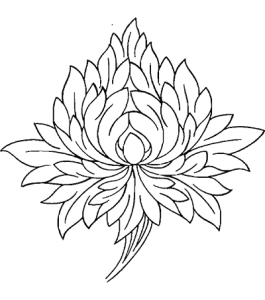According to the fully enlightened Buddha Shakyamuni, the only way out of the pain and confusion that we and all beings like us experience all the time, is to realize the profound truth of Dharma. Throughout the ages many people have wanted to devote their entire life to this ultimate attainment of complete realization, by joining the monastic community, an institution that traces back to the time of the Buddha himself, and which has since been a veritable pillar in the propagation of the teachings to the four corners of the world.
The acceptance of female practitioners or nuns into monasticism has had many challenges, again dating back to the very earliest years after Siddhartha became Buddha under the bodhi tree in Bodhgaya.
In the earliest times, the ordained community—the sangha—was exclusively for monks. Upon the Buddha’s return to his father’s kingdom, Kapilavastu, his maternal aunt and adoptive mother, Mahāpajāpatī Gotamī, beseeched the Buddha to be ordained as a nun so she could follow in his footsteps. The Buddha refused and it seemed that women would have been banned from the monastic tradition. Undaunted, Gotamī resolutely cut off her hair and donned the yellow robes—the marks of monasticism and requested again, through the intermediary of Ananda. The Buddha consented and she became the very first bhikṣuṇī or ordained Buddhist nun. The very first in what became a long line of many accomplished women in the monastic tradition of Buddhism.

The history of monasticism in Tibetan started in the 8th century when the great Indian saint Shantarakshita ordained the first seven Tibetan monks—as a test to see if monasticism would be able to flourish in Tibet. Among the first seven was Khon Luwang Srungwa (Nagarakshita), an ancestor of the founding father of the Sakya tradition. No ordination for women existed in Tibet until much later. The very earliest records of nuns in Tibet were found dating from the time of Rinchen Sangpo (958-1055). Further references of nuns in Tibet are found in Milarepa's (1052-1135) songs of realization.
Perhaps the earliest known Sakya nun is Sakya Pandita's half-sister, Zopa Ringmo. She is mentioned in the writings of Jetsun Drakpa Gyaltsen (1147-1216), one of the five founding lineage masters of Sakya.
During the time of the 31st Sakya Trizin Ti-Shri Kunga Lodro (1729-1783), four Labrangs were founded-the Zhithog Labrang, Duechoe Labrang, Lhakhang Labrang and Rinchengang Labrang. Over the years, the Rinchengang Labrang gradually transformed into a nunnery. All the famous Jetsunmas (daughters of the Khon family) such as Jetsunma Chime Tenpei Nyima, Jetsunma Tadrin Wangmo, and so on were from this nunnery.
Since then, the lineage of the Sakya nuns continues to flourish in Tibet until the 1950's when political turmoil caused much disruption to the monasteries and nunneries in Tibet. [continue reading at Sakya Rinchen Choling].